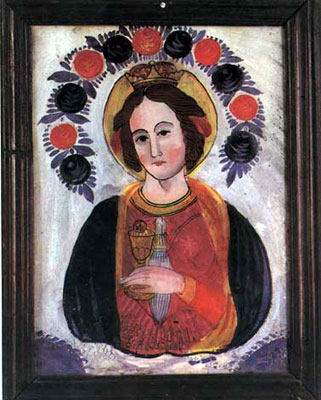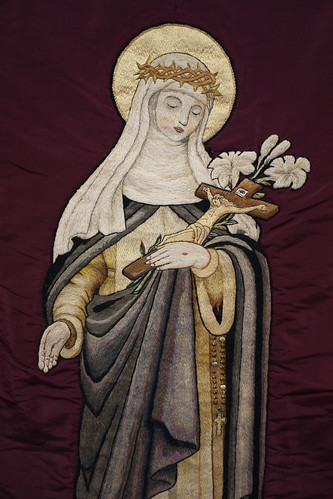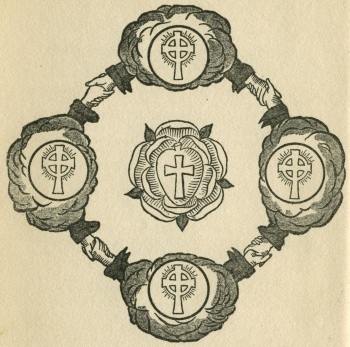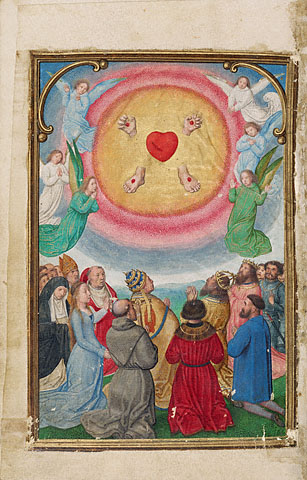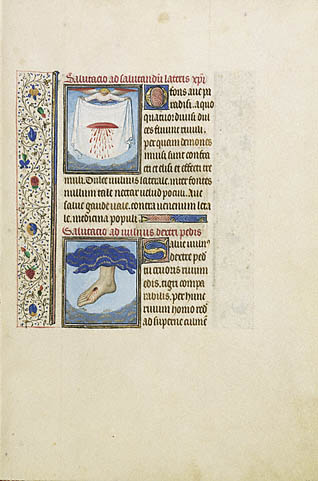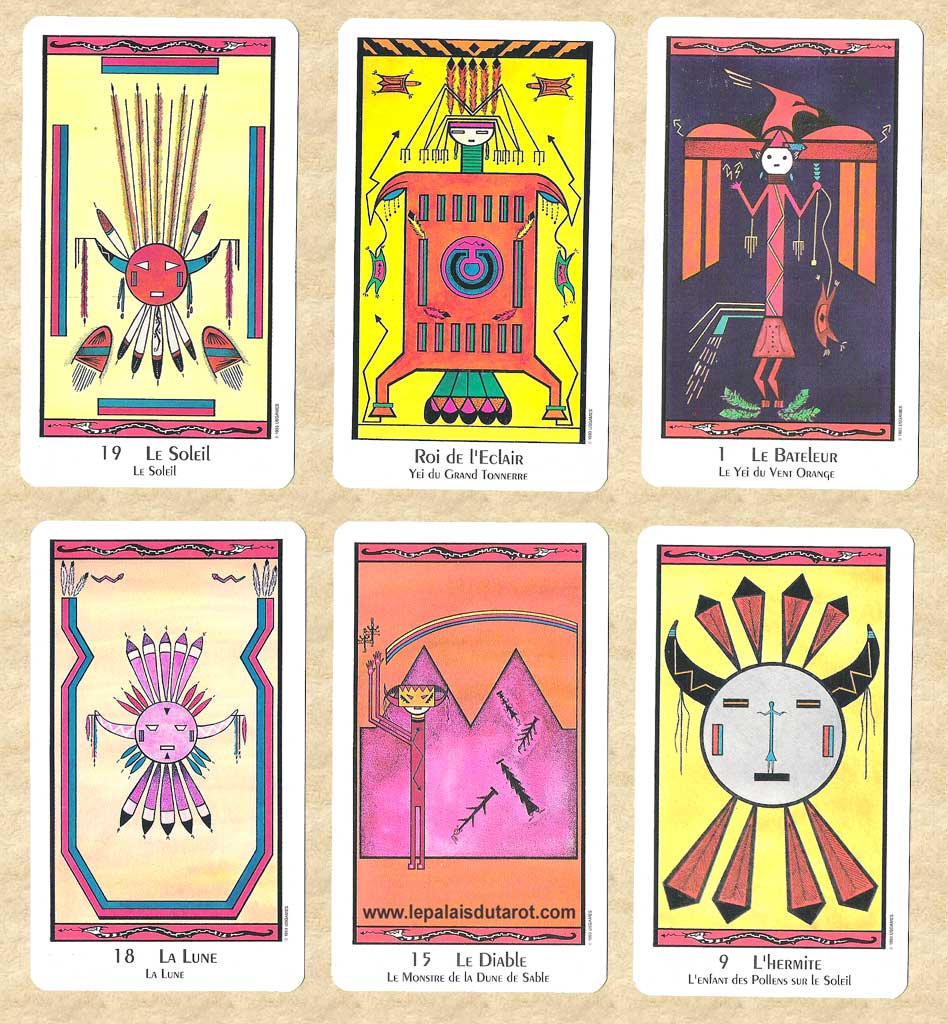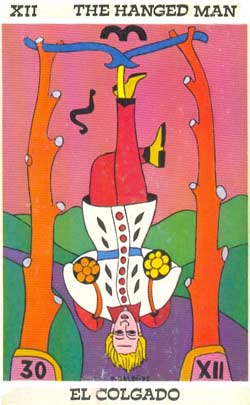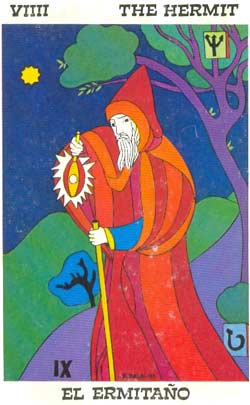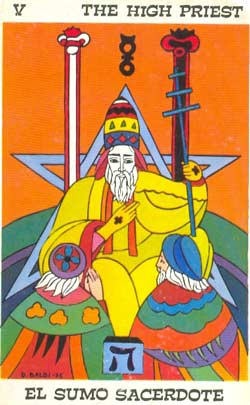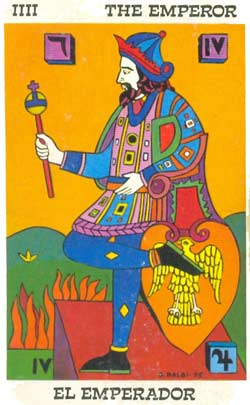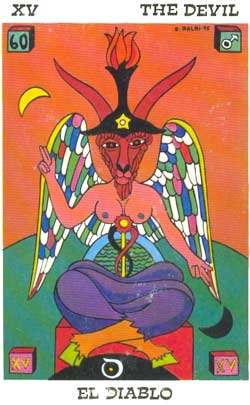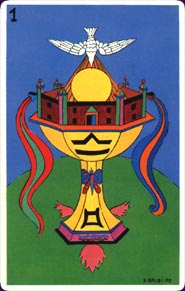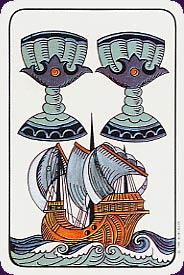Miraculous Bleeding Host of Dijon
Robinet Testard

The Bleeding Host of Dijon was a true late medieval wonder. According to legend, this Communion wafer was desecrated by a Jew and miraculously began to bleed. Installed in the Sainte Chapelle of the Chartreuse de Champmol by Duke Philip the Good of Burgundy, it was destroyed in 1794 by a Revolutionary mob. In the nineteenth century, scientists discovered Micrococcus prodigiosus (microbe of miracles), bacteria that, settling on food or bread kept in the dark, produces a reddish culture resembling blood.
Images of the wafer (less than ten are known) usually accompany the Eucharistic prayer, “O salutaris hostia.” Here, however, the host occurs without the prayer; the owner must have known it by heart. The wafer is stamped with an image of Christ as Judge, arms outstretched and flanked by the instruments of the Passion. Drops of blood dot the surface like wounds from a scourging; some form a ring around the perimeter, a reference, no doubt, to the crown of thorns.
Hours for Rome use, France, Poitiers, c. 1475 (New York, The Pierpont Morgan Library, MS M.1001, f. 17v).
Hours of the Cross and Holy Spirit
Mystical Pentecost

Here the Hours of the Holy Spirit are illustrated by a rare allegorical Pentecost. At the top of the woodcut, the Dove of the Holy Spirit radiates the usual flames of inspiration; the Holy Spirit's fire is transformed, however, into Christ's blood when it reaches earth. From a life-giving fountain, the twelve apostles partake of this liquid sustenance before setting out to convert the world.
This book is one of only three known vellum copies of the “Grandes Heures Royales” published under the patronage of King Charles VIII of France. The Horae produced by Antoine Vérard, known as the “father of the French illustrated book,” are known for their beauty. This particular edition is remarkable for its multitudinous marginal illustrations, large format, and special texts. The last include prayers composed or translated by the French humanist Guillaume Tardif, Charles VIII's former tutor. This copy has been associated with Louis d'Orléans (later Louis XII), whose arms appear in the book but they have been painted over those of the original owner.
“Grandes Heures Royales” for Paris use, France, Paris, after 20 August 1490 (almanac 1488-1508), printed by Antoine Vérard (New York, The Pierpont Morgan Library, PML 127725 [ChL 1523B], f. a5r).




